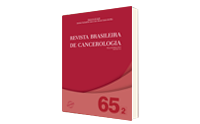Utilization Profile of Immunosuppressants for Graft-Versus-Host Disease Prophylaxis in Patients Submitted to Hematopoietic Stem Cell Transplantation
DOI:
https://doi.org/10.32635/2176-9745.RBC.2019v65n2.148Keywords:
Drug Utilization, Hematopoietic Stem Cell Transplantation, Graft vs Host Disease, Immunosuppressive Agents, PharmacoepidemiologyAbstract
Introduction: Immunosuppressants have high toxicity associated to a narrow therapeutic range, and serum levels should be controlled. Thus, it is necessary to study the use of drugs in clinics that use them, providing an overview of their intake and rational use in a given population. Objective: Identify the profile of the use of immunosuppressants for prophylaxis of graft versus host disease in patients submitted to hematopoietic stem cell transplantation in a bone marrow transplant center. Method: It is a cross-sectional study. The immunosuppressants used in 2017 were classified according to an international classification system, their intake expressed in defined daily dose and their protocols analyzed according to the “Consenso da Sociedade Brasileira de Transplante de Medula Óssea” of 2015. Results: The myeloablative conditioning regimen was the most frequent (51.7%). The most prescribed immunosuppressive protocol was cyclosporine with methotrexate (37.9%). Of the 29 eligible patients, 23 (79.3%) had protocols following the 2015 “Consenso” recommendations. Methotrexate, intravenous cyclosporine and mycophenolate were responsible for 85.64% of the intake. Conclusion: In this study, it was only possible to identify a profile of use of immunosuppressants and compare within the institution due to the scarcity of studies about the use of these drugs. Therefore, new studies should be conducted to promote their rational use and to develop public policies with access to these drugs.









